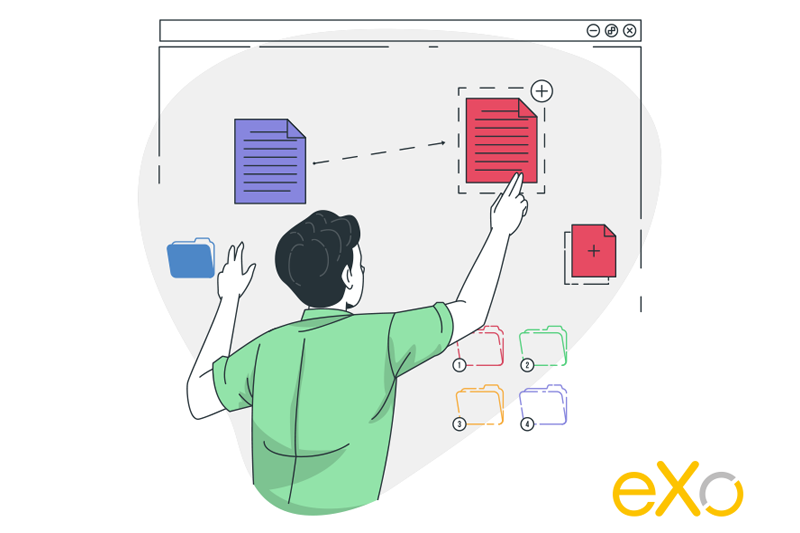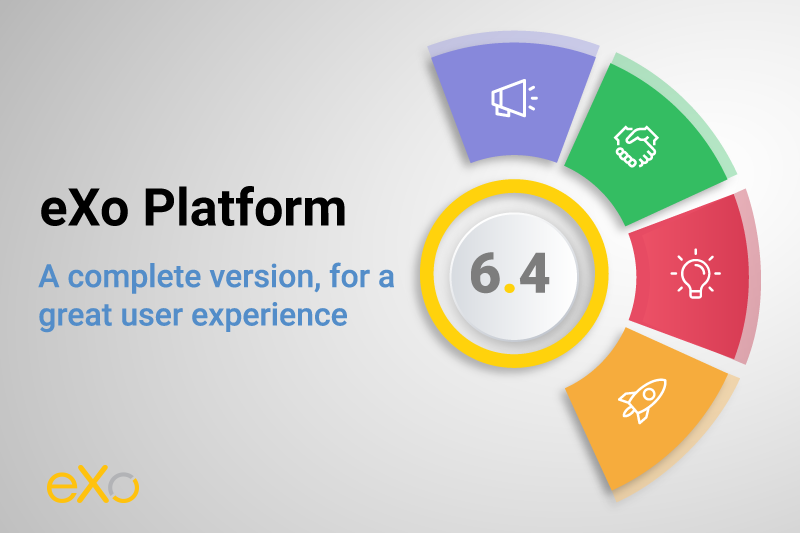- Fares Laroui
- June 3, 2021
How to design and run a digital workplace evaluation survey
Digital workplace projects are (like many other major projects) mainly driven by data from start to finish. Designated teams and decision makers have the challengiAng tasks of carefully studying their users’ needs, researching the market for potential solutions and constantly evaluating and making improvements.
Without continuously gathering and analyzing various types of data, the digital workplace project will most likely be doomed to failure right from the get go. Businesses might find themselves trapped in a platform that offers little to no help to their employees in their daily operations , one that lacks valuable and engaging content which ,of course, translates into low adoption rates and an overall bad investment (and people losing their jobs during the process).

Content
1. Why are digital workplace evaluation surveys important?
Surveys in general are a great way for businesses to understand both their employees and customers and take better informed decisions. When it comes to digital workplace projects, we often look at raw metrics that are mainly collected through built-in analytics modules or third party analytics tools (such as Google Analytics among others). Of course, these tools with their rich set of features can help digital workplace teams collect valuable data about adoption, usage, engagement and efficiency.
However, the collected data as detailed as it might be can’t sometimes be enough on its own (as it is mostly descriptive). To grasp the bigger picture, contextualize the collected data and determine how users perceive the platform, teams often refer to digital workplace evaluation surveys.
Through both quantitative and qualitative research methods, teams can dig deeper into their employees’ needs, understand how they perceive and feel about the platform, what makes them come back and what pushes them away. Additionally, surveys run periodically (every six months or so) will provide a detailed look at emerging and changing trends which can help teams plan ahead and perform the adequate changes for their digital workplace.
Every step of a typical digital workplace project requires the input of employees. From researching the market and choosing the best solution all the way to managing, redesigning the platform and planning the roadmap, different types of surveys are crucial for the success of the project as they help you achieve the following:

FREE WHITE PAPER
Types of Digital workplace solutions
The modern workplace has evolved significantly in recent years, with advancements in technology, the growing number of tools …
Understand employees’ needs
Upon choosing or building a digital workplace, it is important to run initial surveys. Here, the purpose is to figure out what employees want, the challenges they are currently facing and whether they are satisfied with the available tools and resources they use everyday. Answering these questions will help determine the main use cases and whether a digital workplace is the right fit.
Track adoption and engagement levels
Once the digital workplace is introduced, the focus will be placed mainly on adoption and engagement. The questions should revolve more around how much users are using the platform, which apps they use the most, which content they find engaging and informative, what frustrates them, etc. Sure, some of these metrics can be gathered from other sources.
For example, the usage frequency can be determined by the number of distinct logins, the most used apps by a simple module analysis, and so on. However, through a survey, you would be able to hear directly from your employees and their experiences (or moving from the unbiased to the biased, the objective to the subjective).
This way, you can understand users’ satisfaction with the platform and what will make them return (things you can’t determine through simple analytics).
Redesign and develop the digital workplace
Another area where surveys can be used is building on existing capabilities and/or redesigning the platform as a whole. Through the above metrics, the digital workplace project team would have collected enough data about which apps and features employees like and which they don’t.
This obviously leads to the very important question: “How can we improve things?”. Here, after coming up with some ideas for improvement, the team needs to communicate their vision with employees. The latter will most probably have the final say on which additions to include. This process can be effectively done by using a product development and customer satisfaction model such as the Kano model.
The kano model is both simple and effective in detecting employees’ feedback about the inclusion or exclusion of a specific item or in this case feature.
For each feature there will be two questions (functional and dysfunctional). Functional questions reflect employees’ opinion if the feature is added whereas dysfunctional questions reflect employees’ opinion if the feature is absent. Both questions have the same scale with 1 as like, 2 expect, 3 Neutral, 4 Tolerate and 5 dislike. Example:
- How would you feel if the digital workplace had a built-in survey add-on? (Functional question)
- How would you feel if the digital workplace did not have a built-in survey add-on? (Dysfunctional question)
Based on the combination of answers, features will be grouped under categories. For example, if the answer for the above questions are “expect” for the functional and “dislike” for the dysfunctional, then the feature in question is a must have. The process is more or less the same for the other combinations.

FREE WHITE PAPER
2. Steps to create and run a digital workplace evaluation survey
Define the survey goals and objectives
The first step towards conducting a digital workplace evaluation survey is to understand why you are doing it and what you want to achieve. Typically, the goals and objectives of the survey are a direct reflection of what you want your digital workplace to look like.
In general, objectives often revolve around improving communication, fostering collaboration, facilitating access to information, engaging employees and so on. As a result, these objectives will constitute the main factors that you will assess and measure. By factor we refer to a collection of correlated variables that can better describe the collected data. The survey should contain questions designed primarily to assess the digital workplace ability to treat the objectives mentioned above.
Determine the survey format
 Online surveys
Online surveys
If the objective of the survey is to gather quantitative data about usage, engagement and so on, then online surveys are your best bet. Here, there are multiple things that you need to keep in mind.
– Dedicate the first part of the survey to know your audience. This includes typical demographics questions such as the age, gender, team, department, seniority level, etc.
– To guarantee a high participation rate, try to keep the survey short and to the point. Employees don’t have the time nor the willingness to spend more than 5 minutes on a survey.
– Try to be consistent and coherent with your survey response scales in order to eliminate confusion and biases which can negatively impact the results. It is totally up to you to choose between the numerous survey scales such as Dichotomous (a two point scale: Yes/No or True/False), rating scale (5, 7 or 10 point scales), etc. The key is to stick with one or two scales all while associating each number with a specific label (for example 1 being very dissatisfied and 5 satisfied).
– Determine the optimal sample size to minimize the margin of errors and reach an acceptable confidence level. For small companies of tens or hundreds of employees, it is feasible to send the survey to everyone and guarantee representative results. However, within big companies of thousands, you don’t have to ask everyone. A sample of 10% can yield relevant results.
 Interviews
Interviews
Communicate and run the survey
Sending a survey via email to employees and just expecting them to fill it is not a good strategy. Employees can miss it or would simply think “what’s in it for me?”, “How would answering this survey change my daily office life?” etc.
This is why, prior to the launch, try to use multiple communication channels (including the digital workplace) to promote the survey and its importance . Treat the survey as any other promotional activity within your business (a webinar for example). Notify employees on multiple occasions through the mediums they use the most.
Make it easy for your employees by including a link or a QR code to the survey page using the best QR code generators available.
Also, try to associate the survey with actionable results that you will take depending on the responses. This will make employees eager to participate in hope of changing things for the better.
Last but not least, for employees to sit down and respond to a survey (especially a long one), they would need some sort of incentives. Think of granting gamification points for those who complete the survey, invite them to test new features, etc.
Analyze the results
Once the data is collected, it is time to analyze the results. Here, depending on the survey format you have chosen at the beginning you may have to analyze quantitative, qualitative data or both.
Analyzing quantitative data requires a deep understanding of statistical analysis methods such as factor analysis, linear and multiple regression, ANOVA, etc. These methods will help you better analyze and visualize data by reducing variables, comparing variations among and between different groups, etc.
For example, factor analysis can help you minimize the number of variables and group them under specific scores. Think of these two questions “how satisfied are you with the digital workplace?” and “how likely are you to use it more often?”. Both questions revolve around satisfaction which [will eventually constitute the satisfaction score. I believe there is no need to go deeper into this part since this is not a statistics course.
When it comes to qualitative data, it is a bit trickier. It involves a lot of reading in order to identify ideas and broad concepts that will later be indexed and grouped together. This will later help you to identify trends and patterns and establish connections with the overall research objectives.
Report the findings and take action
Now that the data is analyzed by the team, the findings are a clear indication of where your digital workplace project is and where it is heading. Decision makers now have the numbers that can justify their investment (or not).
The findings also constitute the basis on which future initiatives and actions are based. Whether employees find their digital workplace experience good or bad, there is always a course of action to be taken to maintain good satisfaction and engagement levels and to do better.
FAQ
You will find here Frequently Asked Questions about digital workplace with all the answers in one place.
What is a digital workplace?
- An evolution of the intranet
- A user centric digital experience
How to launch an effective Digital Workplace?
- Understand users’ needs
- Identify your digital workplace ambassadors
- Build the digital workplace brand
- Training and onboarding
- Plan the big day
What does digital workplace really mean?
How to be a good digital workplace manager?
- Analytical skills and approach
- Focus on employees
- Communication and strategic vision
Why are digital workplace evaluation surveys important?
Surveys in general are a great way for businesses to understand both their employees and customers and take better informed decisions. When it comes to digital workplace projects, we often look at raw metrics that are mainly collected through built-in analytics modules or third party analytics tools (such as Google Analytics among others).
Here are some benefits of digital workplace evaluation surveys:
- Understand employees’ needs
- Track adoption and engagement levels
- Redesign and develop the digital workplace
➝ Find out why digital workplace evaluation surveys are important
How to create and run a digital workplace evaluation survey?
Now that you have an idea about the importance of digital workplace evaluation surveys, it is time to walk through the main steps that will help you design and run a successful one.
Here are some steps to create and run a digital workplace evaluation survey:
- Define the survey goals and objectives
- Determine the survey format
- Communicate and run the survey
- Analyze the results
- Report the findings and take action
➝ Find out how to create and run a digital workplace evaluation survey
Related posts
- All
- eXo
- Digital workplace
- Open source
- Internal communication
- Collaboration
- News
- intranet
- Future of work
- workplace
- Knowledge management
- Employee engagement
- Employee experience
- Employee productivity
- onboarding
- Employee recognition
- Change management
- Cartoon
- Digital transformation
- Infographic
- Remote work
- Sneak Peek
- Solutions
- Thought leadership
- Tips & Tricks
- Tutorial
- Uncategorized
Leave a Reply
( Your e-mail address will not be published)


